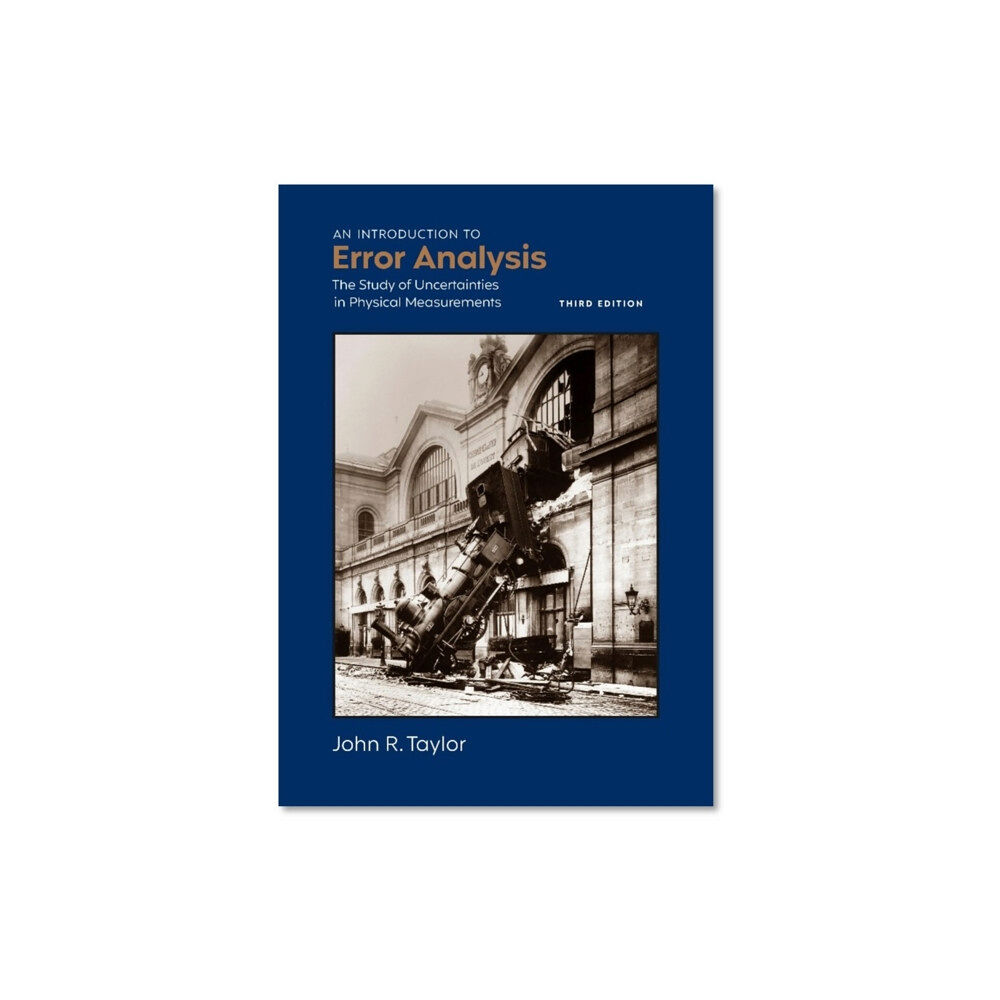- Hem
- Böcker
- Kurslitteratur
- Matematik & Naturvetenskap
- An Introduction to Error Analysis, third edition (häftad, eng)

An Introduction to Error Analysis, third edition (häftad, eng)
This remarkable text by John R. Taylor has been a non-stop best-selling international hit since it was first published forty years ago. Howe...
859 kr
Bara 4 kvar
Skickas inom 4 - 5 vardagar
- Fri frakt
Just nu: Fri frakt på alla köp
Snabb leverans
Alltid låga priser
Produktbeskrivning
This remarkable text by John R. Taylor has been a non-stop best-selling international hit since it was first published forty years ago. However, the two-plus decades since the second edition was released have seen two dramatic developments; the huge rise in popularity of Bayesian statistics, and the continued increase in the power and availability of computers and calculators.
In response to the former, Taylor has added a full chapter dedicated to Bayesian thinking, introducing conditional probabilities and Bayes’ theorem. The several examples presented in the new third edition are intentionally very simple, designed to give readers a clear understanding of what Bayesian statistics is all about as their first step on a journey to become practicing Bayesians.
In response to the second development, Taylor has added a number of chapter-ending problems that will encourage readers to learn how to solve problems using computers. While many of these can be solved using programs such as Matlab or Mathematica, almost all of them are stated to apply to commonly available spreadsheet programs like Microsoft Excel.
These programs provide a convenient way to record and process data and to calculate quantities like standard deviations, correlation coefficients, and normal distributions; they also have the wonderful ability – if students construct their own spreadsheets and avoid the temptation to use built-in functions – to teach the meaning of these concepts.
In response to the former, Taylor has added a full chapter dedicated to Bayesian thinking, introducing conditional probabilities and Bayes’ theorem. The several examples presented in the new third edition are intentionally very simple, designed to give readers a clear understanding of what Bayesian statistics is all about as their first step on a journey to become practicing Bayesians.
In response to the second development, Taylor has added a number of chapter-ending problems that will encourage readers to learn how to solve problems using computers. While many of these can be solved using programs such as Matlab or Mathematica, almost all of them are stated to apply to commonly available spreadsheet programs like Microsoft Excel.
These programs provide a convenient way to record and process data and to calculate quantities like standard deviations, correlation coefficients, and normal distributions; they also have the wonderful ability – if students construct their own spreadsheets and avoid the temptation to use built-in functions – to teach the meaning of these concepts.
| Format | Häftad |
| Omfång | 380 sidor |
| Språk | Engelska |
| Förlag | University Science Books,U.S. |
| Utgivningsdatum | 2022-10-15 |
| ISBN | 9781940380087 |
Specifikation
Böcker
- Format Häftad
- Antal sidor 380
- Språk Engelska
- Utgivningsdatum 2022-10-15
- ISBN 9781940380087
- Förlag University Science Books,U.S.
Leverans
Vi erbjuder flera smidiga leveransalternativ beroende på ditt postnummer, såsom Budbee Box, Early Bird, Instabox och DB Schenker. Vid köp över 399 kr är leveransen kostnadsfri, annars tillkommer en fraktavgift från 39 kr. Välj det alternativ som passar dig bäst för en bekväm leverans.
Betalning
Du kan betala tryggt och enkelt via Avarda med flera alternativ: Swish för snabb betalning, kortbetalning med VISA eller MasterCard, faktura med 30 dagars betalningstid, eller konto för flexibel delbetalning.
Specifikation
Böcker
- Format Häftad
- Antal sidor 380
- Språk Engelska
- Utgivningsdatum 2022-10-15
- ISBN 9781940380087
- Förlag University Science Books,U.S.
